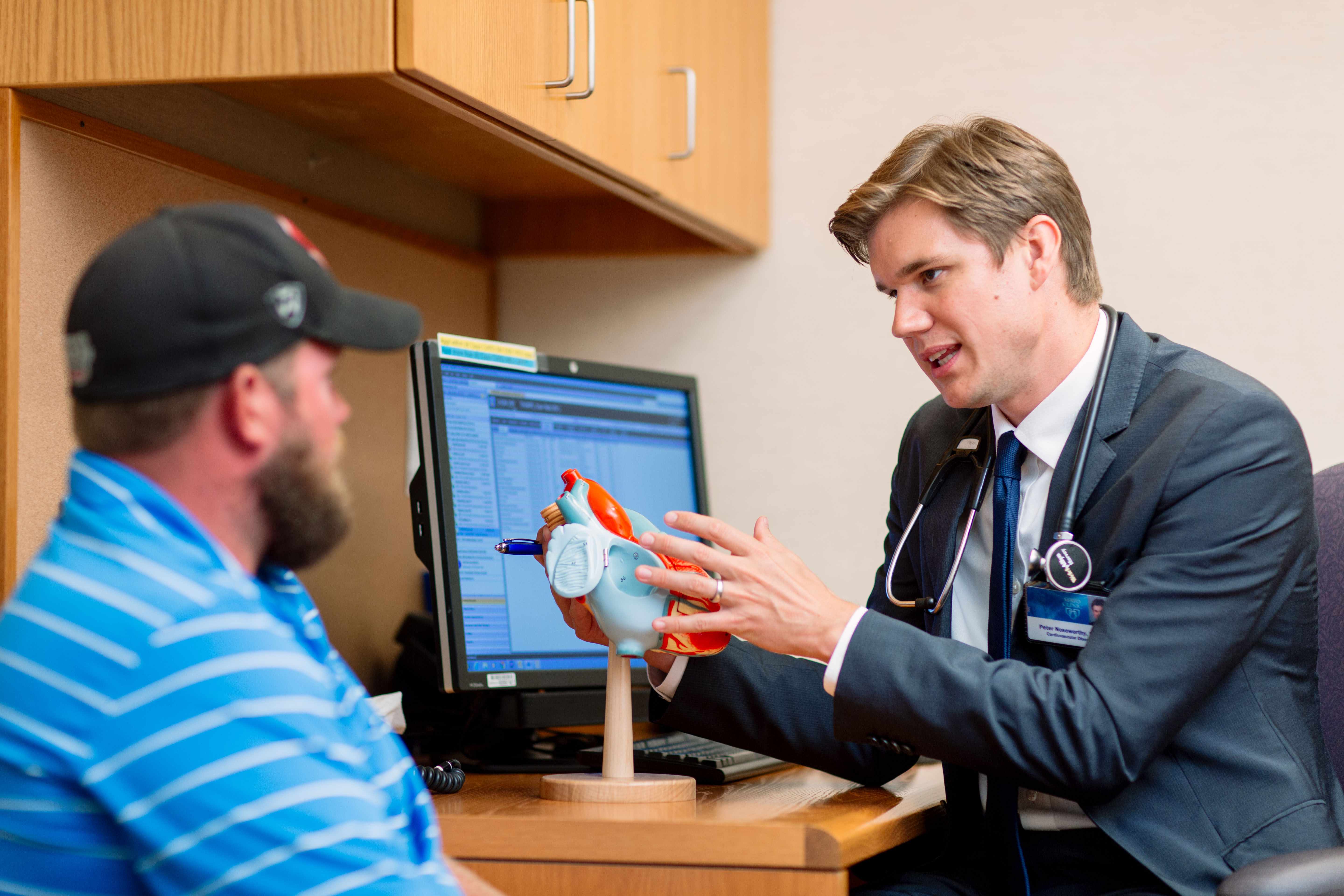-
Cardiovascular
1 in 6 taking blood-thinning drugs may not be getting right dose

ROCHESTER, Minn. — Almost 1 in 6 of the millions of Americans on the new blood-thinning medications for atrial fibrillation, a common heart condition characterized by an irregular and often rapid heart rate, may not be receiving the recommended dose, new Mayo Clinic research finds.
Roughly 10 percent of patients on these drugs for atrial fibrillation have severe kidney disease, and the research, published today in the Journal of the American College of Cardiology, found that more than 40 percent of them are receiving a higher dose than recommended. That could lead to serious bleeding risks.
Also, among patients without severe kidney disease, 13 percent may be underdosed. The researchers found that for one medication in the group – apixaban – underdosing may be less effective at preventing strokes.
“Dosing errors of these blood-thinning medications in patients with atrial fibrillation are common and have concerning adverse outcomes,” says Xiaoxi Yao, Ph.D., a health sciences researcher at Mayo Clinic and the paper’s lead author.
Failing to reduce the dose for patients with severe kidney disease may increase the risk of bleeding. Decreasing the dose when unnecessary may decrease the drugs’ ability to prevent a stroke.
The paper looked at 14,865 patients from October 2010 to September 2015 on the blood-thinning drugs apixaban, dabigatran or rivaroxaban. All three have a standard dose for most patients and a lower dose for patients with kidney issues. The patients in the study were taking the drug for atrial fibrillation, a heart condition associated with a fivefold greater risk of stroke.
“The number of patients using these drugs has quickly increased since the introduction of this new class of drugs in 2010,” says Dr. Yao. Before that, the standard blood-thinning drug since the 1950s was warfarin, which requires constant monitoring and doctor visits.
The Centers for Disease Control and Prevention estimates that between 2.7 and 6.1 million Americans have atrial fibrillation. Previous research has shown that, for up to 90 percent of these patients, there’s a benefit to taking blood-thinning medications as lifelong therapy.
This study, using the OptumLabs Data Warehouse, a database of de-identified, linked clinical and administrative claims information, found that 16 percent of the patients received a dose inconsistent with U.S. Food and Drug Administration labeling. Among the patients with severe kidney impairment, 43 percent received the standard dose ─ a potential overdose. Overdosing was associated with a higher risk of major bleeding but no significant difference in stroke prevention.
Among patients without severe kidney disease, 13 percent got the lower dose ─ a potential underdose. The lower dose was associated with a higher risk of stroke but no difference for bleeding risks for apixaban users. There wasn’t a significant relationship between underdosing and the risks of stroke or bleeding for dabigatran or rivaroxaban users.
“We conducted this study to highlight the prevalence of inappropriate dosing in routine clinical practice and the associated adverse outcomes,” says Peter Noseworthy, M.D., a Mayo Clinic cardiologist and the paper’s senior author. “This study underscores the importance for physicians to be vigilant of kidney function when selecting or adjusting dose.”

Blood-thinning medication dosing is complex, and there are many factors health care providers consider when prescribing the drugs. They have to weigh the benefits and harms, and account for possible drug interactions, among other concerns.
The researchers also note that, because these blood-thinners are preventive, health care providers can’t be certain the medication prevented a stroke, but they can link bleeding events to the drugs. This could cause some providers to be cautious and prescribe a lower dose.
“Overdosing is a fairly straightforward problem and can be avoided by regularly monitoring kidney function,” says Dr. Noseworthy. “However, underdosing is more complex. These medications need to strike a balance between stroke reduction and risk of bleeding. I think physicians often choose to reduce the dose when they anticipate their patients are at a particularly high bleeding risk ─ independent of kidney function.”
For the patients’ part, they should ensure health care providers have updated medical history information and a current list of medications, especially if they see multiple providers at different hospitals or clinics.
“Physicians will also need to regularly follow up with patients on these medications to detect change in kidney function and adapt the dose accordingly,” says Dr. Yao.
The findings are a collaboration between Mayo Clinic physicians and researchers in the Mayo Clinic Robert D. and Patricia E. Kern Center for the Science of Health Care Delivery. The teamwork ensures the research questions address unmet patient needs and places the findings in a perspective that can improve clinical practice.
Additional research team members ─ all from Mayo Clinic ─ are:
• Nilay Shah, Ph.D.
• Lindsey Sangaralingham
• Bernard Gersh, M.B., Ch.B, D.Phil.
###
About OptumLabs
OptumLabs is a collaborative center for research and innovation co-founded by Optum and Mayo Clinic, and focused on improving patient care and patient value. The database is a comprehensive, longitudinal, real-world data asset with de-identified administrative claims data, including medical claims and eligibility information, as well as electronic health record data. The Kern Center for the Science of Health Care Delivery, which leads the relationship with OptumLabs for Mayo Clinic, has published a number of studies identifying areas for potential improvements in health care delivery using the OptumLabs Data Warehouse.
About Mayo Clinic
Mayo Clinic is a nonprofit organization committed to clinical practice, education and research, providing expert, whole-person care to everyone who needs healing. For more information, visit mayoclinic.org/about-mayo-clinic or newsnetwork.mayoclinic.org.
MEDIA CONTACT
Adam Harringa, Mayo Clinic Public Affairs, 507-284-5005, newsbureau@mayo.edu







